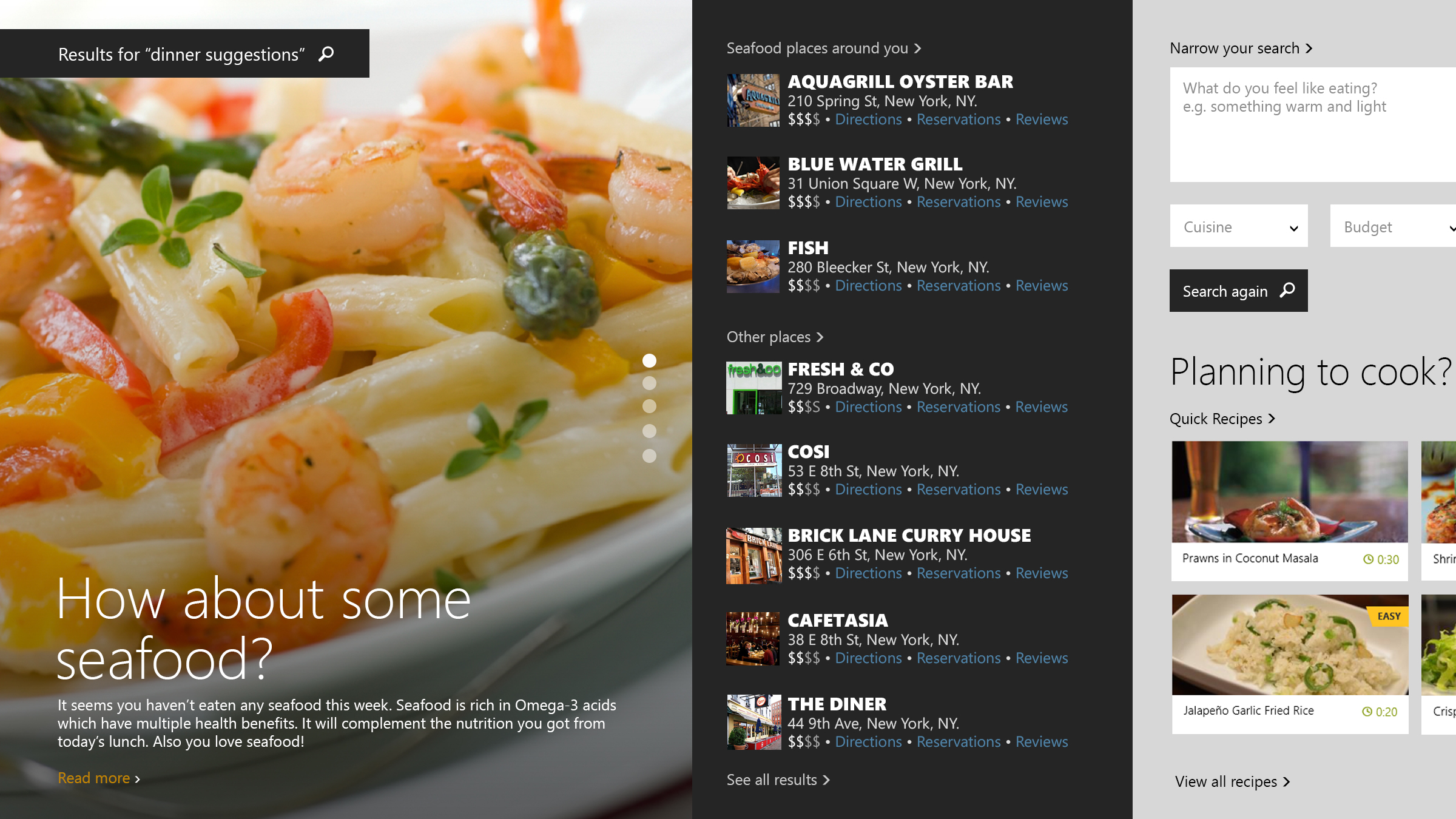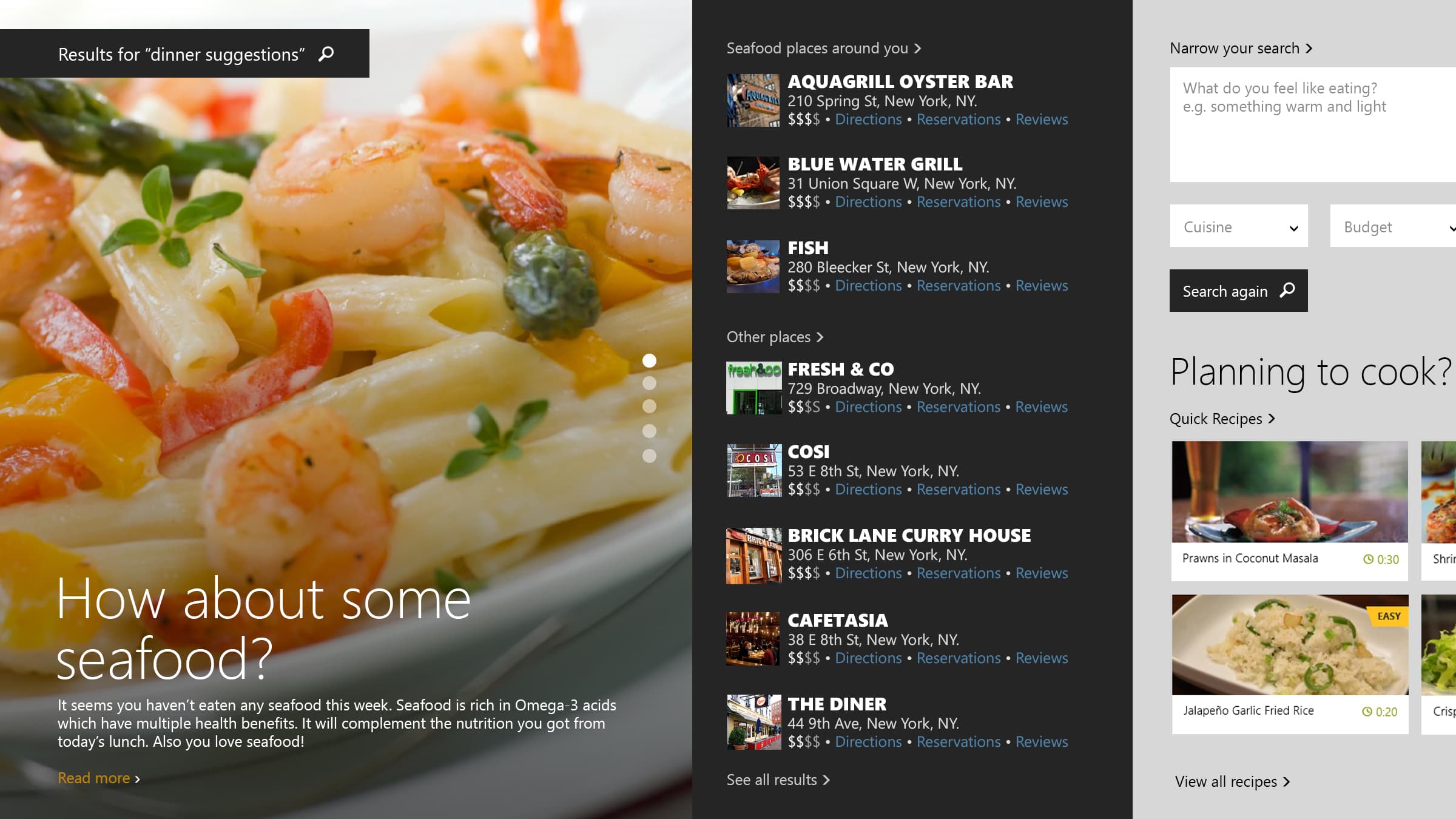Rethinking responsive search in a connected world
A major goal of this experiment was to rethink the meaning of the word responsive when it comes to user interfaces and experiences. A casual mention of this term today is often attached with a frame of reference. That frame of reference being "devices" and "screens". The interface responds to devices and screen-sizes. The sheer diversity of devices is what supports this meaning.
If, however, we choose to step back and look at the bigger picture, it might become apparent that the system won't work if screens and devices are taken out of the picture. Considering the rate at which we are technologizing ourselves a future without traditional displays and screens can be acknowledged to be one of the many. What then happens to responsive? Can the way the machine interacts with us still be responsive?
The way the machine interacts with us seems more interesting to me than the antithesis. This might be because I tend to respect the way we interact with machines and I believe that it is them who need to learn and not us.
Responsiveness should thus be considered with reference to people and context instead of devices/screens.
- Monitors (digital self + environment)
- Personal: calendar, call log, SMS threads, emails.
- Public/Community: news, traffic (Waze) etc
- Private cloud context building –
- Personal: activity trackers (Nike+/Fitbit), health tracker, GSRs, EEGs, GPS etc.
- Public/Community: weather, temperature, humidity, air quality.
- Raw data from search.
It funnels this information to sum up context sensitive data results and context sensitive instructions for the requester to compute the interface.
Why funnel? The choice for using the term "funnel" instead of the popular term "filter" was an informed one. The idea is to seek relevance instead of eliminating irrelevance. The subtle difference lies in the fact that eliminating or filtering out things may not always leave back that what was initially sought.
Notice the account information? (seems like Tom Riddle has a good credit) Q: Where did it come from? A: Pipes.
Funnel is a search-engine agnostic data model that keeps context in mind.
Example 1
I search for "dinner suggestions" with Funnel enabled. It is assumed that Funnel knows what I like, what I ate for lunch today, what is my budget, am I too tired to cook etc. It knows this by opening a couple of pipes to relevant sensors and apps.

Example 2
I search for my "car keys". Funnel opens up pipes to "my tracked objects" inventory. This enables it to search for real things.=

